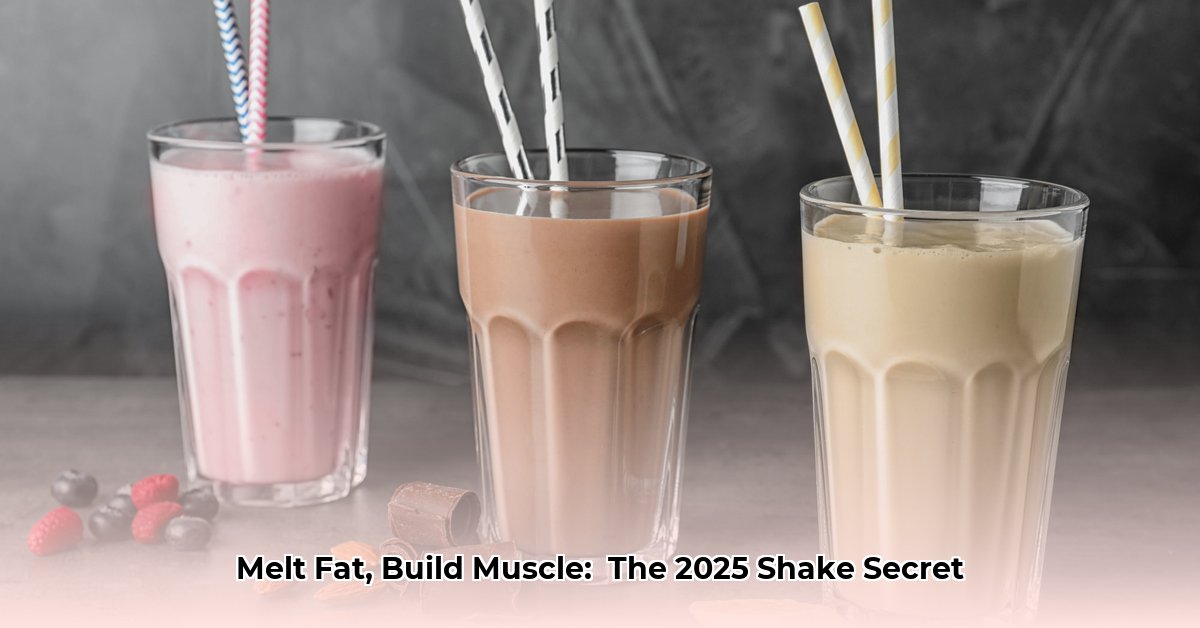
Losing weight can be challenging, but incorporating high-protein, low-carb shakes into your diet might help. This expert guide will equip you with the knowledge to choose the right shake, use it effectively, and understand potential side effects. We'll explore various protein sources, decipher nutrition labels, and offer strategies to seamlessly integrate shakes into a balanced lifestyle.
Understanding Protein Sources: A Comparative Look
Choosing the right protein powder depends on understanding its source and how your body processes it. Several popular options exist, each with benefits and drawbacks.
Whey Protein: Derived from milk, whey is a complete protein (containing all essential amino acids) and digests quickly, making it ideal for post-workout recovery. However, some individuals experience digestive issues.
Casein Protein: Also from milk, casein digests slowly, promoting satiety and potentially aiding weight management. It also offers a complete amino acid profile.
Soy Protein: A plant-based, complete protein, soy is often more affordable but can trigger allergic reactions in sensitive individuals. Some studies suggest potential hormonal effects, warranting further research.
Pea Protein: A plant-based option, pea protein is generally hypoallergenic but may not contain all essential amino acids in the same quantities as animal-based proteins.
Egg White Protein: This complete protein is favoured by those avoiding dairy, but those with egg allergies should avoid it.
This table summarizes the key differences:
| Protein Source | Digestion Speed | Completeness | Potential Benefits | Potential Drawbacks |
|---|---|---|---|---|
| Whey | Fast | Complete | Muscle recovery, quick energy boost | Digestive upset in some individuals |
| Casein | Slow | Complete | Increased satiety, prolonged fullness | Can be more expensive |
| Soy | Moderate | Complete | Affordable, plant-based option | Allergenic potential, potential hormonal effects (requires further research) |
| Pea | Moderate | Generally Complete, but not always | Allergen-friendly, sustainable | Might not be a complete protein for some |
| Egg White | Moderate | Complete | Dairy-free option, pure protein source | Allergenic potential for egg allergies |
Isn't it surprising how much variation exists within seemingly similar products? Choosing the right one is crucial for successful weight loss and overall health.
Choosing the Right Shake: A Step-by-Step Guide
Selecting the best low-carb protein powder requires careful consideration and label scrutiny. Follow these steps to make an informed decision:
Decipher the Label: Carefully examine the nutrition facts. Prioritize products with minimal added sugars and artificial sweeteners. Understand the difference between total carbohydrates and net carbohydrates (total carbs minus fiber and sugar alcohols). The lower the net carbs, the better.
Protein Power: Aim for at least 20 grams of protein per serving. This will support muscle growth and satiety, pivotal for weight management.
Third-Party Testing: Look for products certified by reputable third-party labs, verifying purity and absence of contaminants. This ensures the quality and accuracy of the label claims. Independent verification provides an extra layer of consumer protection.
Ingredient Check: Review the ingredient list. Avoid excessive additives, fillers, or artificial colors and flavors. Simplicity is key.
Palate Appeal: Choose a flavor you enjoy to maintain consistency and adherence to your plan, making it easier to stick with your routine.
Do you find yourself struggling to make healthy choices? Choosing a protein powder you actually like is a game-changer.
Incorporating Shakes into Your Diet: Practical Tips and Recipes
High-protein, low-carb shakes are a tool, not a magic bullet. Incorporate them strategically:
Meal Replacement: Replace a higher-carb meal (breakfast or lunch) with a shake. Ensure your shake provides sufficient micronutrients.
Snack Savior: If cravings strike, a protein shake can help curb hunger and prevent unhealthy snacking.
Protein Boost: Use shakes to supplement your daily protein intake if you struggle to meet your goals through whole foods alone.
Remember that a balanced diet is paramount for long-term success. Shakes shouldn't be the sole focus of your weight-loss efforts – they are a supplemental tool.
Potential Side Effects and Mitigation Strategies
While generally safe, some individuals experience side effects like bloating, gas, or digestive discomfort. These can usually be managed by:
Gradual Introduction: Start with smaller servings to allow your body to adjust.
Hydration is Key: Ensure adequate water intake, which helps digestion and prevents constipation.
Fiber Balance: Maintain adequate fiber intake through whole foods. Some protein powders might be low in fiber, making it necessary to ensure adequate intake from your diet.
Listen to Your Body: If persistent digestive issues occur, switch the protein source or brand.
The majority of people tolerate protein shakes well, but individual reactions vary. Pay close attention to your body's response.
Long-Term Considerations: Sustainable Weight Management
Consistency is crucial. High-protein, low-carb shakes are part of a larger strategy, not the entire solution. Sustainable weight loss involves a balanced diet, regular exercise, and a holistic approach to wellness. Relying solely on shakes can lead to nutrient deficiencies. Consult a healthcare professional or registered dietitian for personalized guidance tailored to your specific needs. What's the most effective way to incorporate protein shakes into a sustainable, healthy lifestyle? A personalized nutrition plan may be your answer.
How to Choose the Best Low-Carb Protein Powder for Long-Term Success
Key Takeaways:
- Low-carb protein powders are a convenient method for increasing protein intake while limiting carbohydrate consumption, supporting weight management and muscle building.
- Whey protein isolate often excels due to its high protein content and low carbohydrate count.
- Carefully examine labels, focusing on total and net carbs, added sugars, and artificial sweeteners. Third-party testing ensures product quality.
- Explore various protein sources to find a suitable option based on individual needs, digestion, and allergies.
- A balanced diet and lifestyle are essential for long-term well-being; protein powders supplement, not replace, whole foods.
Remember, this guide provides general information. Consult a healthcare professional before making significant dietary changes.